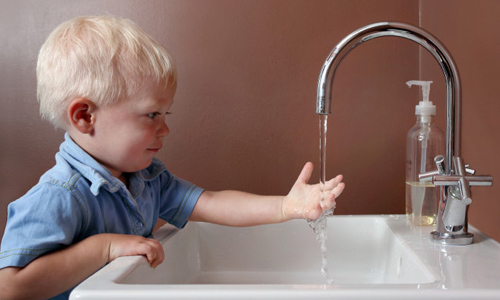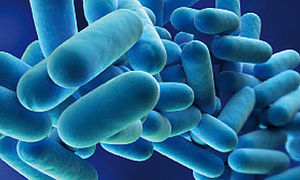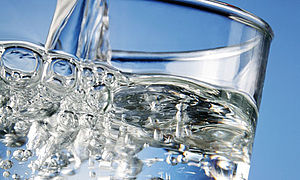Magazine
Bacteria and other microbes in drinking water

Although the drinking water in most parts of Europe is high in quality and tested regularly, it is still possible for the water to contain bacteria, viruses and other microbes. In most cases this is not due to the quality of the water released into the system by the water providers but is instead the result of contaminated pipes. The formation of biofilms helps microbes to proliferate. A distinction is made between pathogenic microbes that are able to survive in water and microbes that live in water and are able to reproduce there, either as single cells or in biofilms.
Microbes living in water
The bacteria that are able to live in water include pseudomonads (e.g. Pseudomonas aeruginosa) and Legionella bacteria. All types of gram negative non-spore forming aerobic Legionella bacteria can effectively be classed as human pathogens. The most important species for human disease is Legionella pneumophila. This species is responsible for about 90 % of all Legionella infections. Legionella bacteria multiply within the cells of amoebae and other protozoans that form biofilms in water pipes. The temperature of the water has an important influence on their proliferation. As far as the bacteria are concerned, the ideal water temperature is between 25 and 55 degrees Celsius. This means older hot water pipes that are rarely used present a risk.

The life cycle of Legionella bacteria involves two distinct phases. In the replicative phase the bacteria are immobile and possess only a low level of toxicity. In the second phase they are thicker and shorter and have developed flagellae. In this phase they are highly pathogenic and are therefore dangerous for humans. Infection occurs as a result of inhaling aerosols containing Legionella bacteria which then multiply in the lungs.
Pseudomonads such as Pseudomonas aeruginosa are aquatic microbes occurring in moist environments (earth, river banks, garden hoses, water pipes etc.). The rod-shaped aerobic bacteria of the species Pseudomonas aeruginosa are responsible for many human infections and are now thought to be the most frequent hospital pathogens. They are seen as being especially problematic. For one thing, they cause many different illnesses e.g. pneumonia, urinary tract infections, acute inflammatory bowel disease, meningitis and inflammation of the auditory tract, and for another thing they are now resistant to many common antibiotics.
Bacteria that survive in water
Many bacteria and viruses are able to survive for at least a certain amount of time in water. Oral uptake of contaminated drinking water can elicit the corresponding infections in humans. Some pathogens are also taken up via the skin, wounds or bodily openings.
Coliform bacteria
Coliform bacteria such as E. coli (Escherichia coli) can occur in drinking water. The bacterium can only survive in water for a few days. If it is detected in drinking water this means there has been acute or recent contamination with faecal material. If a person drinks a large amount of water contaminated with coliform bacteria this can cause diarrhoea. The maximum level of E. coli permitted in drinking water is 0.
Enterococci
Enterococci are lactic acid bacteria occurring in the gut of humans and animals where they support the process of digestion. Because of their fermenting properties they are added to certain foods e.g. cheese and salami. Unlike coliform bacteria, enterococci – which belong to the group known as faecal streptococci - can survive for several weeks outside the gut. If contamination is detected it is therefore difficult to determine the exact time at which the contamination occurred. There are currently 25 known species of enterococci. The species that most often cause infections are Enterococcus faecalis and Enterococcus faecium. Diseases typically caused by enterococci are urinary tract infections, inflammation of the heart (endocarditis), wound infections and abdominal abscesses.
Other pathogens that are able to survive in water include salmonella, enterobacter and cholera bacteria. Well-known viruses like norovirus and rotavirus, which can cause gastrointestinal diseases in humans, can also be taken up in drinking water. Furthermore, there is a risk of becoming infected with the hepatitis A and E viruses from drinking water.
Drinking water must be tested regularly

This testing involves determination of the total number of microbes. People with a compromised immune system have a higher risk of becoming ill from contaminated water. That is why hospitals and similar establishments need to take special precautions.